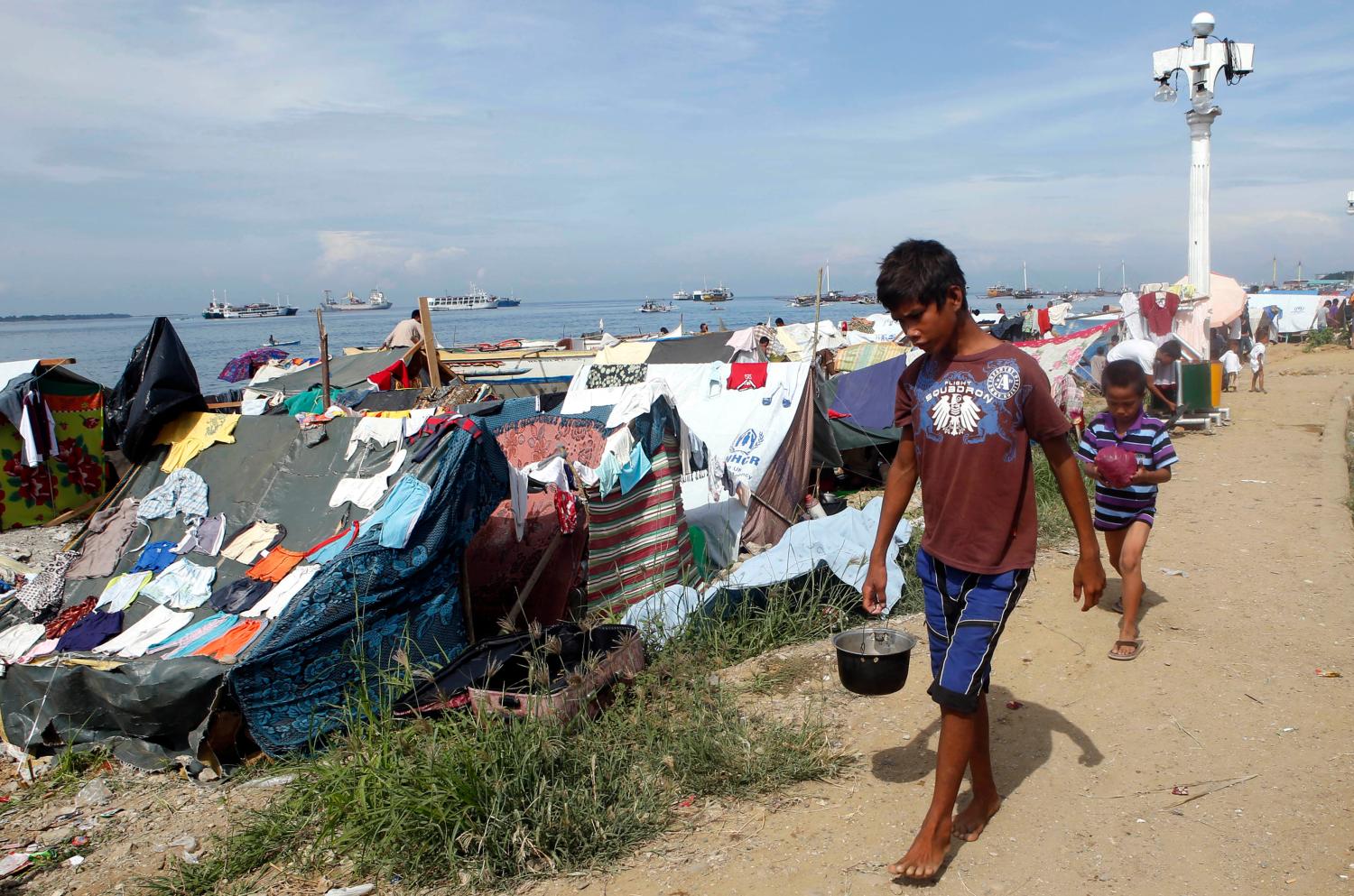Translations are available in Bahasa Indonesian, Bengali, French, Hindi, Kyrgyz, Russian, Spanish and Japanese (please note these translations are not formal IASC publications).
Natural disasters are traditionally seen as situations creating challenges mainly related to the provision of humanitarian assistance. Less attention has been devoted to the need for human rights protection in this particular context.
In particular, the tsunamis, hurricanes and earthquakes, which hit parts of Asia and the Americas in 2004 and 2005, as well as the Haiti earthquake of 2010, highlighted the fact that affected persons may face multiple human rights challenges in the aftermath of natural disasters, such as:
- Lack of safety and security (e.g. rampant crime, secondary impacts of natural disasters, etc.);
- Gender-based violence;
- Unequal access to assistance, basic goods and services and discrimination in aid provision;
- Abuse, neglect and exploitation of children;
- Family separation, particularly for children, older persons, persons with disabilities and other individuals who may rely on family support for their survival;
- Loss/destruction of personal documentation and difficulties to replace it, in particular due to inadequate birth registration mechanisms;
- Inadequate law enforcement mechanisms and restricted access to a fair and efficient justice system;
- Lack of effective feedback and complaint mechanisms;
- Unequal access to employment and livelihood opportunities;
- Forced relocation;
- Unsafe or involuntary return or resettlement of persons displaced by the disaster; or
- Lack of property restitution and access to land.
This is a revised version of the 2006 IASC Operational Guidelines on Human Rights and Natural Disasters. To request a hard copy, please contact the Project at [email protected].
Foreword
To promote and facilitate a rights-based approach to disaster relief, the Inter-Agency Standing Committee (IASC) adopted Operational Guidelines on Human Rights and Natural Disasters in 2006. The Guidelines are a major contribution to the promotion of a rights-based approach in situations of natural disasters. Following the feedback from the field-testing of the guidelines we have incorporated lessons-learned from the field into a revised version of the Guidelines. This revised version also expands the rights-based approach to include preparedness measures. Small steps in preparedness can have a major impact once a disaster strikes.
Downloads:
Annex I, II, III
The Annex sections include a comprehensive glossary of terms used in the Operational Guidelines, a list of protection of specific groups of persons cross-references to relevant guidelines and a list of all the codes of conduct, guidelines and manuals referenced in the above report.
Downloads:
Part I: Introduction
These Operational Guidelines primarily aim to help international and non-governmental humanitarian organizations and members of the Inter-Agency Standing Committee to ensure that disaster relief and recovery efforts are conducted within a framework that protects and furthers human rights of affected persons.
Natural disasters are traditionally seen as situations creating challenges mainly related to the provision of humanitarian assistance. Less attention has been devoted to the need for human rights protection in this particular context. These challenges could be mitigated or avoided altogether if the relevant human rights guarantees were taken into account by national and international actors, in all phases of the disaster response: preparedness, relief and recovery. A human rights-based approach provides the framework and necessary standards for humanitarian assistance activities. In addition, a protection perspective can bring a strategic dimension to humanitarian assistance programs, namely one of promoting and securing the fulfillment of human rights.
Downloads:
Part II A: Protection of Life; Security and Physical Integrity of the Person; and Family Ties
Part II A describes live saving measures, in particular during an evacuation, to ensure the life, physical integrity and health of persons exposed to imminent risks created by natural disasters. This includes: protection against the separation of families during an evacuation, protection against the secondary impacts of natural disasters, protection against violence, including gender based violence during and after the emergency phase, security in host families and communities, or in collective shelters and appropriate measures in dealing with the mortal remains of the deceased.
Downloads:
Part II C: Protection of Rights Related to Housing; Land and Property; Livelihoods and Secondard and Higher Education
This section is about the measures to ensure that all persons have the right to housing, land, property and possessions, situations of transitional shelter, housing and evictions, access to livelihoods and employment opportunities and access to secondary and higher education.
Downloads:
Part II B: Protection of Rights Related to the Provision of Food; Health; Shelter; and Education
Part II B covers the access to and provision of humanitarian goods and services and the provision of specific goods, such as adequate food, water and sanitation, shelter, clothing; essential health services and education.
Downloads:
Part II D: Protection of Rights Related to Documentation; Movement; Re-Establishment of Family Ties; Expression and Opinion; And Elections
This last section explains the guidelines regarding personal documentation for identification and other purposes, the right to freedom of movement in and out of endangered zones (particularly in the context of durable solutions), re-establishing family ties and preserving family unity, expression, assembly and association, and religion and electoral rights.
Downloads:
Part II: General Principles
This section covers the general guarantees for persons affected by natural disasters. Persons affected by natural disasters (affected persons) should be recognized and treated as persons entitled to enjoy the same rights and freedoms under international human rights law as others in their country, and to not be discriminated against on the basis of their race, colour, sex, disability, language, religion, political and other opinion, national or social origin, property, birth, age or other status. These general guarantees are organized into four groups: Group A: Protection of Life; Security and Physical Integrity of the Person; and Family Ties, Group B: Protection of Rights Related to the Provision of Food; Health; Shelter; and Education, Group C: Protection of Rights Related to Housing; Land and Property; Livelihoods and Secondary and Higher Education and Group D: Protection of Rights Related to Documentation; Movement; Re-Establishment of Family Ties; Expression and Opinion; And Elections.
Downloads:



